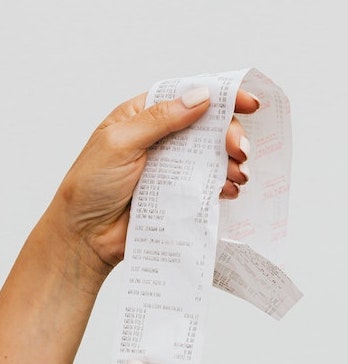Have you ever wondered why, after eating in a restaurant, they give you something called a “check” when it’s time to pay? Why do they call it that?
In this article, we’ll explore the reasons and history behind this word. Read on to find out!

Table of Contents
Why is the Bill Called a Check in Restaurants?
The term “check” in reference to the final bill in eateries is steeped in history. The etymology stems from centuries-old practices, intertwining banking, accounting, and dining industries.
- The Historical Intersection of Banking and Dining
- Early establishments used a system of chits or tokens to keep track of patrons’ consumption. These physical tokens acted as ‘checks’ against fraud or overcharging.
- Banking systems adopted the terminology, and as commercial banking rose, so did the term’s popularity in dining spaces.
- Medieval Europe’s Influence
- Medieval European taverns and inns played a part in the terminology. Patrons received a ‘checkerboard’ upon entry, which tracked their consumption. Hence, the word “check” rooted itself in the dining vocabulary.
- The Evolution of Restaurant Billing Systems
- The transition from physical tokens to paper billing didn’t change the terminology. The paper bill essentially acted as a ‘check’ against the items consumed.
- Popularity in the New World
- As settlers moved to America, they carried traditions and terminologies. The word “check” for the bill resonated with the populace and remained prevalent.
- Cultural Adoptions and Variations
- While the term “check” is popular in the U.S., terms like “bill” are more common in regions like the U.K. Cultural exchanges and migrations further solidified the usage.
- Modern-Day Reinforcements
- Hollywood and global media play a part in the continued usage. TV shows and movies set in American eateries often showcase characters asking for the “check”, further popularizing the term.
- The Psychological Impact of ‘Checking’
- The term also resonates psychologically. Asking for a ‘check’ means verifying the items and ensuring there’s no discrepancy.
- The Role of Modern Tech
- Modern-day tech and POS systems still label the end-of-meal receipt as a ‘check’, further ingraining the term in our dining experiences.
- The Term’s Endurance in Colloquialisms
- Phrases like “pick up the check” or “foot the check” keep the terminology alive in day-to-day conversations.
- A Nod to Tradition in a Fast-Evolving Industry
- Even as dining evolves with tech-driven solutions, certain traditions, including the term ‘check’, endure as a nod to history.
Conclusion
Understanding the term “check” in the context of dining is a delicious blend of history, culture, and language. The next time you ask for the check after a meal, you’ll not only be concluding a delightful dining experience but also participating in a centuries-old tradition. So, here’s to more insightful dining moments, one check at a time!
FAQs
Why not simply call it a bill in the US?
The term “bill” is used interchangeably with “check” in many US regions. However, the historical context of “check” has cemented its popularity, especially in casual dining settings.
Do other countries use the term ‘check’ for the bill?
While the term is popular in the US, many countries prefer “bill”, “tab”, or other localized terms. Terminology varies based on historical, cultural, and linguistic influences.
Is the term becoming obsolete with How has the COVID-19 pandemic influenced the use of the term? payments?
With contactless payments gaining traction, the term’s usage hasn’t diminished. Many establishments still use “check” in their digital systems.
Which term should I use when traveling?
It’s always a good idea to observe local customs or simply ask the server for the final amount due. In most cases, either “bill” or “check” will be understood.

